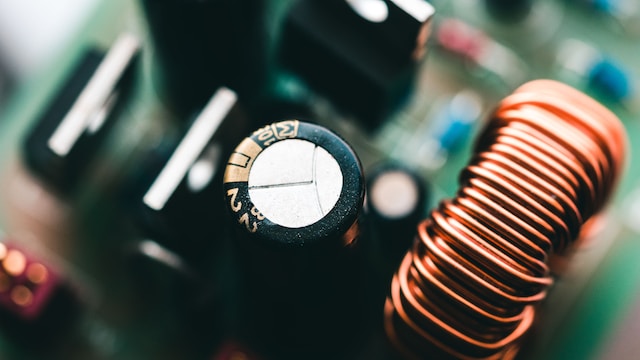Essential Guide to Electrical Steels

Electrical steel is a unique product used in a broad range of industries, including energy, automotive, aerospace, manufacturing, and medical device. Also known as silicon steel and lamination steel, this material provides excellent magnetic properties, making it ideal for use in things, like generators, motors, and transformers. Electrical steel also cuts power losses, boosts electrical device efficiency, and reduces energy use. The exact formulation for electrical steel, however, must be tailored to produce specific magnetic properties for specific applications.
Electrical steel is an iron alloy with silicon as the main additive element rather than carbon. The silicon additive increases its electrical resistivity. That reduces eddy currents—the circular electrical currents induced in a conductor by a changing magnetic field. Eddy currents waste energy and heat the conductor. The silicon also helps create a finer grain structure in the steel, further reducing eddy currents. Electrical steels also have low hysteresis losses—the energy losses that occur when you magnetize or demagnetize ferromagnetic materials.
Benefits of Electrical Steels
Electrical steels offer a range of benefits that make them ideal for use in electromagnetic devices. Electrical steel:
- Enhances efficiency: The material improves the efficiency of electromagnetic devices by reducing core losses. That can generate significant energy savings, especially in large electrical devices like motors and transformers.
- Reduces operating costs: The boost in efficiency produced by electrical steel often results in lower operating costs. A more efficient motor consumes less electricity, which saves money on energy bills.
- Smaller and lighter devices: Electrical steels enable manufacturers to produce smaller, lighter electromagnetic devices. Being highly efficient, electrical steel requires less material to produce the same magnetic field strength.
- Less environmental impact: Electrical steel helps reduce the impact of electromagnetic devices by reducing energy consumption and wasting heat, making the material ideal for environmentally-conscious manufacturers.
Types of Electrical Steel
Many types of electrical steels exist, each with its properties and applications. Two common types of electrical steels are grain-oriented (GO) steel and non-grain-oriented (NGO) steel. GO steel’s grain structure aligns in one direction. That gives them higher magnetic permeability and lower core losses than other electrical steel types. Manufacturers often use GO steel in static devices and equipment, like transformers, where energy efficiency is critical. GO steels, however, are expensive and difficult to manufacture.
NGO electrical steel lacks a preferred grain orientation. Plus, it has higher core losses than GO electrical steel. NGO steels are ideal for applications where manufacturability and cost are more important than efficiency. Often used in rotating devices and equipment, like electric motors, generators, and high-frequency converters, NGO electrical steel is less expensive and easier to manufacture than other electrical steels.
Other types of electrical steel are high-silicon electrical steel and amorphous electrical steel. High-silicon electrical steels, which contain more silicon than other types of electrical steel, are typically used in high-performance applications, such as large transformers and motors. Amorphous electrical steels, which features a non-crystalline structure, are typically used in high-performance applications where the highest possible efficiency is required. Both steels are expensive and difficult to manufacture.
Properties and Applications of Electrical Steel
Electric steel’s properties make it ideal for a wide range of applications, including capacitors, inductors, relays, and solenoids. It is also used in the cores of household appliances, in the rotors and stators, and to step down voltage in electricity transmission and distribution systems. Plus, it’s used in the motors and other electrical components of industrial equipment and machinery, such as robots, CNC machines, and conveyor belts.
Electrical steel’s properties also make it well-suited for use in the cores of autotransformers to improve performance and efficiency and in current transformers to measure the current flowing in electrical circuits. They also make electric steel well-suited for use in the cores of magnetic switches and relays to measure the current flowing in an electrical circuit and in electrical ballast to improve their performance and efficiency.
This material’s properties include:
- High permeability: Electrical steel’s high permeability means it is easily magnetized and demagnetized—a property critical for electromagnetic devices, which must switch their magnetic field quickly and efficiently.
- Lower core losses: Electrical steels have low core losses. So, they waste less energy and are more efficient and environmentally friendly.
- High electrical resistivity: This property measures how well a material resists the flow of electricity. Electrical steel’s high electrical resistivity helps reduce the eddy currents that waste energy and heat conductors.
- Good mechanical properties: Electrical steels have good mechanical properties, such as strength and ductility, so that they can withstand a high degree of mechanical stress.
Manufacturing Process of Electrical Steel
The manufacturing process for electrical steel is complex and requires tight control to ensure the desired properties are achieved. The most critical steps in the process include melting, casting, reheating, and hot rolling. It also involves cold rolling, annealing, and finishing. However, the specific manufacturing process for electrical steel varies depending on the type produced and the properties desired. For instance, an NGO electrical steel material needs a less complex manufacturing process to achieve its unique properties than does GO steel does.

 Tech Steel & Materials
Tech Steel & Materials
Comments are closed